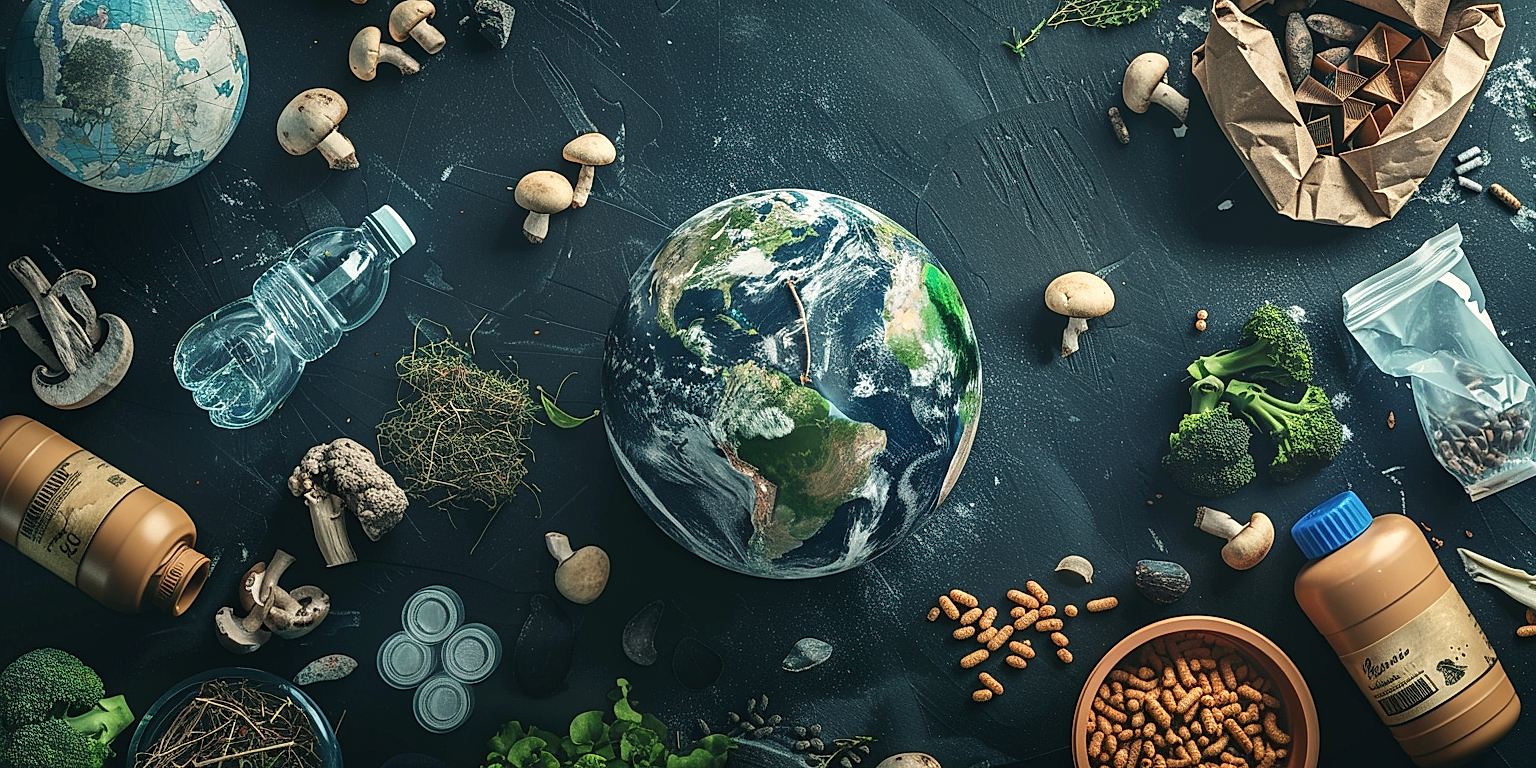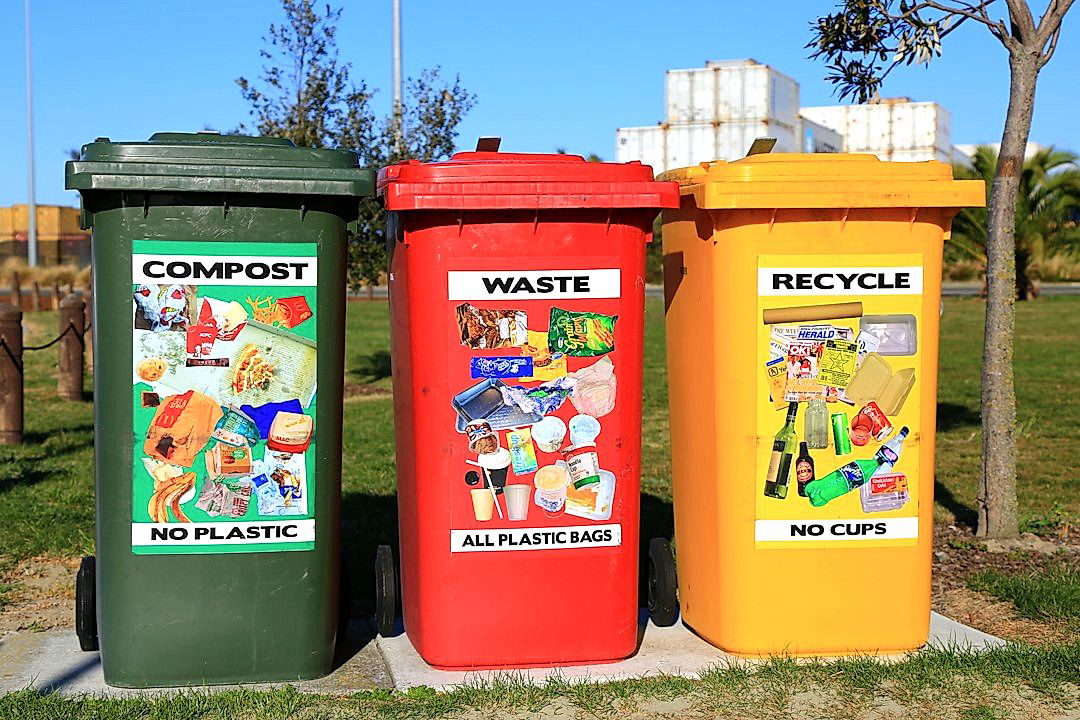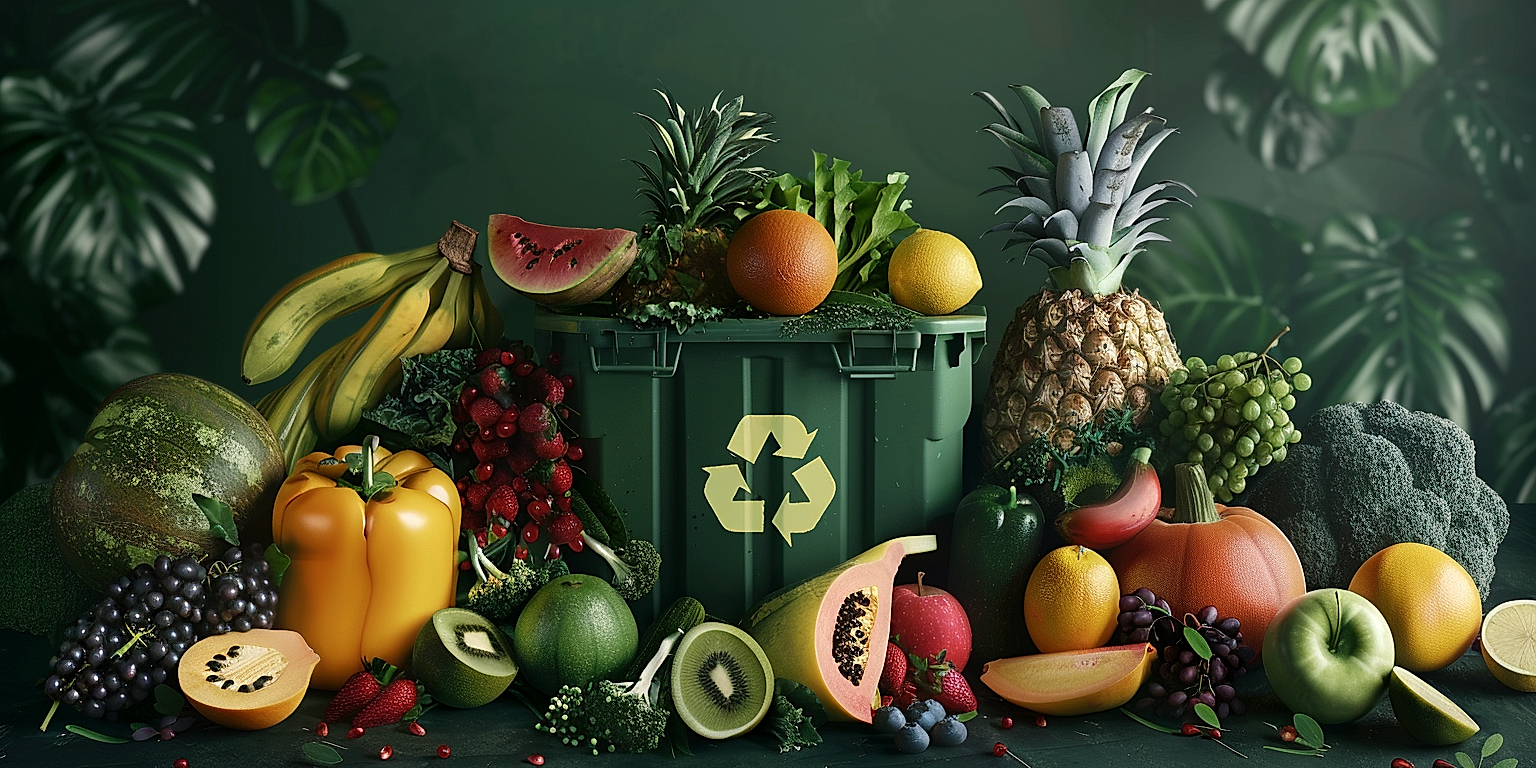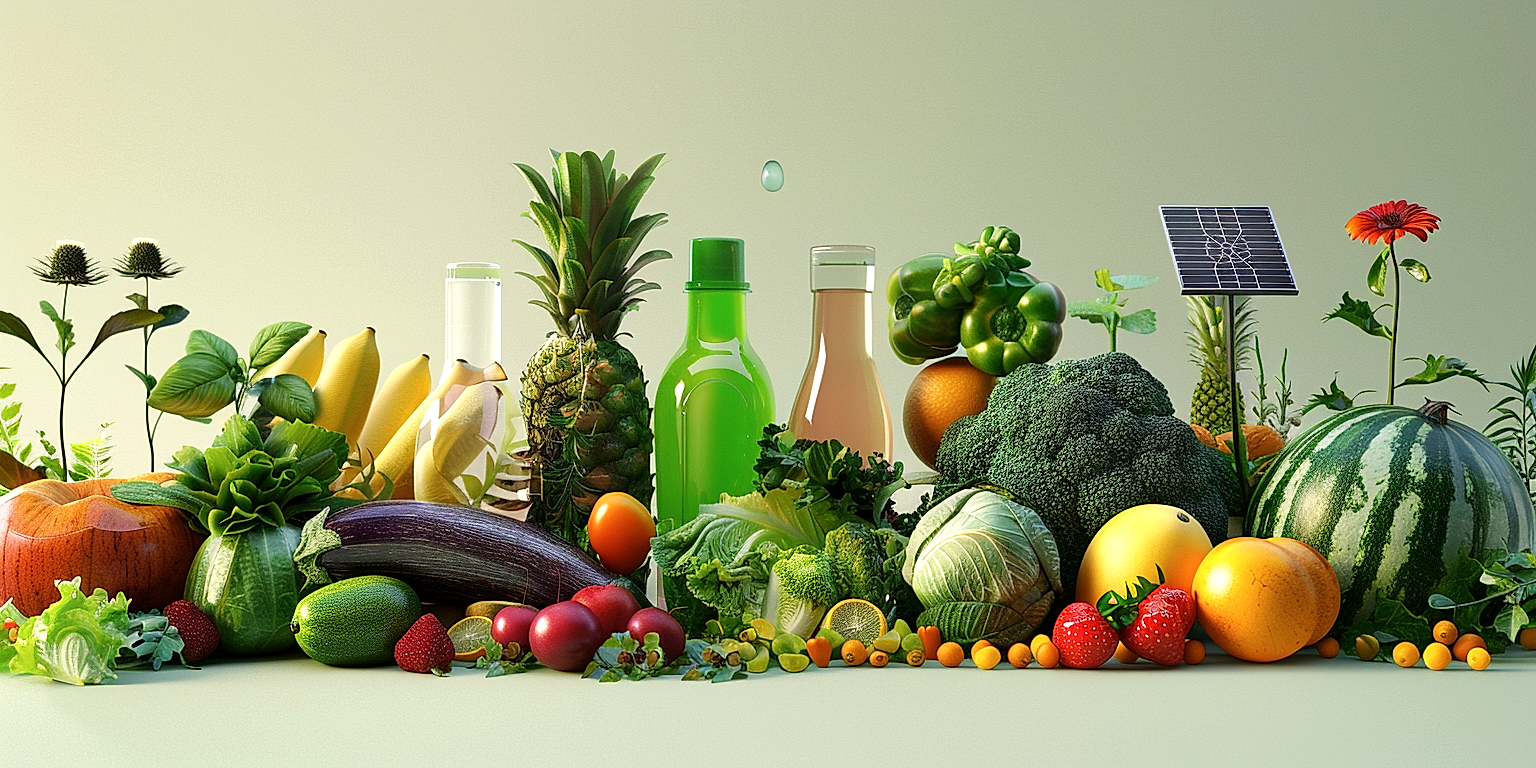The task of reimagining waste has never been more imperative in our world than it is today.
As we confront the dual crises of resource depletion and climate change, the need to transition from linear to circular economic models is paramount.
Particularly in the vast and fast-paced sector of produce processing, waste management requires special attention.
This introduces opportunities for innovative solutions that not only reduce waste, but turn it into a valuable resource.
Balancing economic prosperity with environmental sustainability requires a comprehensive understanding of circular economy models.
This piece will aim to shed light on these models, specifically in the context of managing waste from produce processing.
Contents
- Circular Economy Models For Produce Processing Waste
- 1. Composting Surplus Fruits and Vegetables
- 2. Converting waste to biogas for energy
- 3. Creating Animal Feed from Production Waste
- 4. Extracting bioactive compounds from waste
- 5. Repurposing waste as organic fertilizers
- 6. Cultivating Mushrooms on Coffee Ground Waste
- 7. Making eco-packaging from agricultural waste
- 8. Brewing bioethanol from fruit peels
- 9. Recovering precious metals from e-waste
- 10. Transformation of seafood waste into nutraceuticals
- The Bottom Line
Circular Economy Models For Produce Processing Waste
1. Composting Surplus Fruits and Vegetables
When dealing with surplus fruits and vegetables, one efficient way to mitigate waste is by turning it into compost.
The process of composting involves mixing together plant materials such as leaves, grass clippings, and vegetable peels, allowing them to decompose naturally over time to create nutrient-rich soil.
This soil can then be used to grow more healthy fruits and vegetables, creating a sustainable loop within the agricultural sector.
In essence, composting transforms waste to useful and nutrient-rich soil that enhances the health and productivity of farms.
This model exemplifies the principles of the circular economy, as it promotes the concept of turning waste into resource.
Moreover, by composting surplus fruits and vegetables, companies and farmers can reduce their reliance on artificial fertilizers, which often contain harsh chemicals that can damage the environment.
Another advantage of this model is that compost can improve the structure and health of the soil, leading to higher yields in the long run.
It is also worth noting that composting is a relatively simple process that can be done on a small scale in homes and gardens, as well as on a larger scale in farms and industrial operations.
It’s an efficient way to manage organic waste, reduce landfill use, and contribute to carbon sequestration as decomposing organic matter in compost absorbs carbon from the atmosphere
Furthermore, surplus fruits and vegetables that are not suitable for human consumption or that are not aesthetically pleasing enough for the market can be given a second life through composting.
This helps to reduce food waste, a significant issue in many countries around the globe.
In addition to these benefits, composting surplus fruits and vegetables can also create jobs and stimulate local economies, as the compost has to be processed, transported, and sold.
It’s important to note that the effectiveness of composting can be influenced by various factors, such as the ratio of green to brown materials, the moisture content, and the temperature of the compost pile.
While composting surplus fruits and vegetables can require time and effort, it ultimately represents a viable, eco-friendly, and cost-effective method of dealing with food waste and promoting a circular economy in the agricultural sector.
2. Converting waste to biogas for energy
One of the innovative approaches in the realm of the circular economy is the conversion of waste to biogas for energy production.
Biogas primarily composed of methane and carbon dioxide, is engendered through the process of anaerobic digestion, a natural, biological, oxygen-free process.
This process requires the presence of organic waste, bacteria and an oxygen-free environment.
Organic waste such as food waste, yard waste, farm waste and sewage sludge can be transformed into potent-and useful energy.
Anerobic digestion breaks down organic matter into methane-rich biogas which can be streamlined to produce electricity, or be utilized in place of natural gas.
This creative yet practical method not only tackles the challenges related to waste management, but also considerably reduces the reliance on fossil fuels.
Biogas technology also effectively reduces greenhouse gas emissions by capturing methane that would otherwise be released into the atmosphere.
Engineer this potentially unstable and harmful greenhouse gas into a useful, sustainable energy resource is a notbale step towards sustainability.
Furthermore, the byproduct of the biogas process is a nutrient-rich fertilizer that can be employed for agricultural purposes.
Thus, the conversion of waste to biogas encapsulates the principles of the circular economy – the waste of one process becomes a resource for another.
This realization has been the mainstay in several countries that are encouraging the development of biogas technologies.
For instance, Germany and China are leading the way in harnessing biogas under national renewable energy policies.
However, economies must also focus on capitalizing on the significant potential that waste to biogas conversion offers in reducing energy demands and nurturing a sustainable environment.
Establishing supportive legislations and policies that promote investment in waste-to-biogas technologies can be a necessary step in encouraging the transition towards a more circular economy.
The process and benefits of converting waste to biogas illustrate how a circular economy can transform perceived waste material into valuable resources that can further sustain life and economies.
3. Creating Animal Feed from Production Waste
Managing agriculture and food production waste is a pressing issue, and finding viable solutions is increasingly important in a world demanding sustainability.
A beneficial and age-old method of dealing with farm waste is converting it into animal feed.
Leftovers from fruit and vegetable production, grains, and other organic material can be transformed into nutritious feed for livestock.
Applying circular economy models in this process, food producers can redirect their waste from landfills towards animal feed, resulting in environmental and economic benefits.
It reduces the need for traditionally-made commercial feeds – which often require extensive land and labor resources – thus conserving both physical and economic resources.
This practice aligns with the concept of a circular economy where waste is not viewed as a useless product but is seen as a resource for another process.
Concurrently, it minimizes waste generation and its associated environmental pollution.
Moreover, diverting food waste to animal feed also holds significant potential in reducing greenhouse gas emissions as organic waste contributes to methane emissions when decomposed in landfills.
Given the rising cost of animal feeds, it makes practical sense to turn crop residues and surplus into organic feed.
This approach has the added benefit of providing a solution to the increasing costs of waste management.
However, to ensure safety and optimal nutrition, these waste materials should be carefully processed and monitored.
Treatment processes should be designed to conserve nutrients while eliminating any potential contaminating agents.
Policies and guidelines should also be in place to guide this process to ensure that food safety is not compromised and animals receive nutritionally balanced diet.
Research is ongoing to explore optimal methods and technologies for converting different types of waste into animal feed, taking into account factors such as nutritional value, safety, and cost-effectiveness.
Creating animal feed from agricultural waste presents a wonderful opportunity to reduce waste, feed livestock and protect our environment, aligning well with the goals of a circular economy.
4. Extracting bioactive compounds from waste
In the context of creating a circular economy through efficient waste management, extracting bioactive compounds from waste has increasingly become an innovative method of value addition.
Produce processing residues, which are often discarded as waste, are actually rich sources of bioactive compounds such as polyphenols, flavonoids, and essential oils.
This waste includes the remains of fruits, vegetables, and grains that are often undervalued and underutilized, despite their potential value in pharmaceuticals and nutraceuticals.
By extracting these bioactive compounds, industries cannot only reduce waste but also create additional sources of revenue.
The process of extraction, for example steam distillation or solvent extraction, ensures that these valuable compounds can be isolated and used in various applications such as food additives, pharmacological agents, and personal care products.
Simultaneously, this practice plays a significant role in conserving natural resources as it reduces the need to procure raw materials for these compounds, often a process that involves intensive farming and exploitation of natural resources.
Extracting bioactive compounds goes hand in hand with a zero waste approach, making it an important practice in embracing a circular economy model.
Natural waste-based bioactive compounds are known to have a lower environmental footprint compared to those derived through synthetic processes.
For instance, residues from wine production can be processed to extract resveratrol, an antioxidant beneficial in preventing heart diseases and fighting cancer cells.
Similarly, citrus peels, otherwise discarded, are a rich source of hesperidin, a bioflavonoid with potent anti-inflammatory and antioxidant properties.
Therefore, this process does not only valorize waste, but also provides natural and sustainable alternatives to synthetic chemical compounds.
Scientific research and development is key in progressing this practice further and ensuring optimal extraction processes, while also identifying new potential sources of bioactive compounds in waste.
Investments into technology and infrastructure are crucial in making this activity commercially viable and scalable on a large scale.
Furthermore, the regulatory environment plays a crucial role in enabling the practice of extracting bioactive compounds from waste.
Regulations need to be structured in a way to encourage this practice, while ensuring safety and quality standards are maintained in the products derived from waste.
Overall, the extraction of bioactive compounds from waste offers a multifold solution – it helps achieve waste reduction, adds economic value, and supports the preservation of the environment – all-the-while providing the potential for innovative and sustainable products.
5. Repurposing waste as organic fertilizers
As we delve into the concept of repurposing organic material for beneficial uses within the framework of a circular economy model, it’s important to consider how waste from produce processing can be transformed into organic fertilizers.
One of the primary benefits of this strategy is that it supports healthy and sustainable agriculture by providing nutrient-rich soil amendments.
Organic fertilizers, unlike their chemical counterparts, improve the soil’s structure, providing a better environment for plants to thrive.
Providing this natural and efficient method of fertilization quite literally completes the cycle of growth, harvest, consumption, and regrowth.
Not only does this process transform what would otherwise be waste into a useful product, it also decreases the need for synthetic fertilizers, thereby reducing pollution and its associated health risks.
The use of this repurposed waste can also lead to improved crop yields, which benefits farmers directly.
In the context of a circular economy, the objective is to maximize resource efficiency while minimizing waste.
Through the use of produce waste as organic fertilizers, it’s possible to extract the maximum value from agricultural materials before they are finally disposed of.
Furthermore, it can even contribute to the mitigation of climate change, as composting organic waste decreases methane emissions which play a significant role in global warming.
Organic fertilizers derived from produce waste can be an effective soil supplement in both small and large-scale farming.
They enable farmers to minimize their reliance on non-renewable resources, such as phosphorus and potassium, which are commonly used in synthetic fertilizers.
By adding this valuable organic material back into the soil, we are essentially ‘closing the loop’ in our food production and consumption process.
Organic waste recycling, in this case for fertilizer production, is a major step towards more sustainable operations within the agricultural sector.
Farmers who implement these practices may realize savings in input costs and take one step further towards sustainable agriculture.
The Circular Economy Model achieves an outcome where there’s no such thing as waste.
This integrated approach fulfills the intent of a circular economy model, turning organic waste into a productive resource.
6. Cultivating Mushrooms on Coffee Ground Waste
Coffee ground waste, a common byproduct of the coffee industry, has typically been viewed as a nuisance. However, in the context of circular economy models, it presents an intriguing opportunity for sustainable growth.
When it comes to cultivating mushrooms, few substrates offer the blend of nutrients and accessibility presented by coffee ground waste.
Our globe’s voracious coffee consumption ensures a steady supply of this waste product, providing a sustainable, readily available growth medium for the cultivation of various mushroom species.
Of all the ways to repurpose coffee ground waste, its use in mushroom cultivation stands out for both its simplicity and its potential broad impact on sustainable agriculture.
With minimal processing, coffee grounds can be transformed into a rich substrate that supports the growth of mushroom mycelium.
Rich in nitrogen, coffee grounds are a robust, nutrient-dense material that mushrooms thrive on, converting the waste into edible, profitable fungi.
Furthermore, the heat generated during the coffee brewing process effectively sterilizes the coffee grounds, reducing the need for additional treatments before use in mushroom cultivation.
By growing mushrooms on coffee ground waste, businesses can capitalize on this abundant waste stream, generating income while helping divert waste from landfills.
The practice not only provides a model of circular economy in action, but it also aids in waste reduction, food production, and even carbon sequestration as the mushrooms grow.
However, it’s worth noting that beyond the financial and environmental benefits, the process of cultivating mushrooms on coffee grounds also holds community-building potential.
Increasingly, urban mushroom farms are springing up, taking advantage of local waste streams and connecting people to the process of food production in a tangible way.
The use of an everyday waste product to produce a high-quality, edible product brings the concept of circular economy into people’s daily lives, fostering an understanding and appreciation of sustainable practices.
Whether on a small scale in a home garden or on a larger commercial scale, coffee ground waste proves to be an astonishingly valuable resource in the hands of innovative mushroom growers.
This innovative method exemplifies the potential transformative power of circular economy models in managing produce processing waste.
In essence, cultivating mushrooms on coffee ground waste offers an innovative example of how waste can be transformed into a profitable and sustainable food production system.
7. Making eco-packaging from agricultural waste
One of the innovative strategies presented in circular economy models for producing processing waste involves the creation of eco-packaging from agricultural waste.
With the escalating demand for packaging materials, specifically in the food industry, there is an urgent need to address its environmental impact.
Consequently, manufacturing packaging from agricultural waste presents a holistic approach to waste management while meeting the packaging needs of the industry.
In fact, agricultural waste such as straw, husks, and stalks, often considered as a nuisance, can be transformed into valuable resources when properly utilised.
The conversion process involves separating lignin, a natural polymer found in the cell walls of plants, from the fibrous material.
The extracted lignin is then used as the key building block in the creation of biodegradable packaging material.
These eco-packages not only mitigate the plastic waste problem but also substantially degrade within a minimal amount of time when disposed of properly.
Moreover, the utilization of agricultural waste for manufacturing packaging has resulted in a significant reduction of carbon footprint associated with traditional packaging methods.
Research indicates that this technique could potentially reduce carbon emissions due to processing and disposal of packaging waste by up to 50%.
Furthermore, the transition to eco-packaging has economic benefits as it translates to cost savings in the long run.
The reduction in costs is attributed to the decreased dependence on the import of raw materials used in traditional packaging, leading to increased financial sustainability.
More innovation in this field could be driven by policy incentives and regulations that encourage businesses to adopt more sustainable practices.
By implementing such a model, companies can also demonstrate their commitment to sustainability, thus enhancing their brand value and customer loyalty.
In doing so, they contribute directly to efforts aimed at minimizing waste, protecting the environment, and promoting the sustainable use of resources.
Overall, the application of a circular economy model in making eco-packaging from agricultural waste provides a viable avenue for realizing the ambitious goals of global sustainability.
It effectively meshes economic growth with environmental conservation, which is a necessary condition for the survival and wellbeing of future generations.
8. Brewing bioethanol from fruit peels
The concept of brewing bioethanol from fruit peels has sparked great interest in the scientific community lately, as it presents itself as an efficient and environmentally-friendly method of managing organic waste.
This process essentially entails the fermentation of the sugars present in fruit peels, which subsequently produces ethanol.
The potential in this sphere is tremendous, as massive amounts of fruit peels are generated on a daily basis and often disposed of through methods that can have detrimental effects on the environment.
Virtually every type of fruit peel can be utilized to brew bioethanol, thus presenting a multi-faceted solution to a widespread waste management issue.
A plethora of research has been done on the topic, with results indicating that the ethanol yield from fruit peels could rival that of traditional crops used for this purpose.
Implementing this method within the framework of a circular economy model would not only assist in reducing waste, but also contribute towards sustainable energy production.
The process does, however, require a certain level of technical expertise and investment to ensure its efficiency and viability.
Fortunately, the rapid advancement of scientific knowledge and technology has made it increasingly easier for businesses to acquire the required resources and skills.
Various industries, particularly those in the food and beverage sector, are now starting to acknowledge the value and potential profitability of bioethanol production from fruit peels.
This includes industries relative to winemaking, juice production, and canning companies that generate substantial amount of fruit peel waste.
The production of bioethanol also leads to the creation of by-products such as glycerol and yeast, which can further be utilized beneficially.
For instance, glycerol possesses antifreeze properties and can be used in the production of food, pharmaceuticals, and cosmetics, while brewing yeast can be used in baking among other things.
Coupled with the promising prospects of bioethanol as a substitute to gasoline, breweries utilizing fruit peels could very well contribute towards a significant reduction in our reliance on fossil fuels.
This model of brewing bioethanol from fruit peels aligns perfectly with the principles of a circular economy, as it ensures maximum utilization of a resource and limits waste products to a bare minimum.
Overall, this model of organic waste management and recycling provides solutions to multiple environmental and economic challenges, and serves as a testament to the power of innovation in achieving sustainability.
9. Recovering precious metals from e-waste
The concept of a circular economy suggests a shift from the prevailing linear “take-make-use-dispose” economy towards a sustainable economy that seeks to eliminate waste and continually use resources.
This shift has profound implications for diverse sectors, not least of which is the management of e-waste and recovering precious metal from it.
With the rapid rise of consumer electronics, e-waste has become an increasingly significant waste stream, and with it, the opportunity to recover precious metals.
Many electronic devices, such as smart phones, tablets, and computers, contain precious metals like silver, gold, palladium, and copper, which are valuable commodities.
When processed, these metals can be reclaimed and reused, offering both financial benefit and environmental sustainability.
Notably, the process of recovering these metals can be intricate, often involving mechanical and chemical treatments to separate valuable components from complex electronic assemblies.
However, advances in technology and processes are making this task increasingly feasible and profitable.
Organizations that specialize in e-waste recycling and recovery are well positioned to manage this complex task, separating valuable components from the rest of the hardware, often through a combination of manual and automated processes.
Given the high value of some of these metals, the financial incentives can justify the meticulous work required for extraction.
Moreover, the environmental benefits are significant, not only because extracting these materials from e-waste reduces the demand for virgin materials, but also because e-waste that is not processed can release harmful substances into the environment.
Nevertheless, the process of extracting these precious metals is not without its challenges.
The need for high standards of safety and environmental responsibility, combined with technical complexities of the process, mean that not all e-waste generated worldwide is currently processed in this way.
Still, the potential for the growth of this aspect of the circular economy is vast.
With the proper incentives, technology, and policies in place, it is highly plausible that the scaling up of such efforts may soon be possible.
As such, the recovery of precious metals from e-waste represents a promising avenue for progress towards a more sustainable, circular economy.
10. Transformation of seafood waste into nutraceuticals
The global seafood industry, while a major contributor to worldwide nutrition and socioeconomic growth, generates significant amounts of waste, particularly in the form of shells and unused body parts.
However, these wastes, instead of just being disposed of, can be transformed into value-added products known as nutraceuticals.
By definition, nutraceuticals are food or parts of food that provide medical or health benefits, including the prevention and treatment of disease.
With growing consciousness about health and wellness, the nutraceuticals market is rapidly expanding, and seafood byproducts have a role to play in that growth.
On a biochemical level, many seafood byproducts contain high concentrations of beneficial components like omega-3 fatty acids, proteins, minerals, and antioxidants, whiсh make them ideal candidates for nutraceutical extraction.
Linking seafood waste to this emerging market can foster circular economy models in the seafood industry.
For instance, shrimp shell waste rich in chitin can be transformed into chitosan, a bioactive compound used in nutraceuticals, pharmaceuticals, and bioplastics.
Also, fish bones and skin, usually discarded, are loaded with collagen and can be harnessed for the production of collagen-based products.
The nutraceutical potential of seafood waste thus offers a sustainable solution for waste management in the seafood industry.
Moreover, transforming seafood waste into nutraceuticals can significantly reduce the environmental footprint of the seafood industry.
Creating nutraceuticals from seafood waste also represents an economical way to extract value from what would otherwise be discarded, contributing to economic growth and job creation.
However, realizing this potential demands a shift in perspective – from viewing seafood waste as an issue to seeing it as a potential resource.
Moreover, the industry needs appropriate processing technologies, regulatory support, and public awareness about the benefits of these products for successful transition.
The circular economy model for seafood waste not only adds to the industry’s sustainability but also brings health and economic benefits. It’s thereby a win-win situation for the industry, the environment, and consumers.
Overall, the transformation of seafood waste into nutraceuticals stands as a powerful illustration of how a circular economy model can turn waste into wealth, highlighting the exciting possibilities of produce processing waste management.
The Bottom Line
Waste management strategies should no longer simply revolve around reduction and disposal.
Innovations have advanced the concept of turning waste into valuable resources, creating a more sustainable way of managing surplus products.
Composting fruits and vegetables, converting waste into biogas, repurposing agricultural leftovers into animal feed, organic fertilizers and eco-packaging all present promising alternatives.
Moreover, the extraction of bioactive compounds, cultivation of mushrooms on used coffee grounds, brewing bioethanol from fruit peels and recovering precious metals from e-waste demonstrate that there’s plenty of untapped potential in our refuse.
Even seafood waste can be ingeniously transformed into nutraceuticals, offering valuable health benefits.
All these initiatives not only contribute to a more sustainable world but also create new opportunities for economic growth and diversification.
The key to a sustainable future may, in fact, lie in what we once considered garbage.




